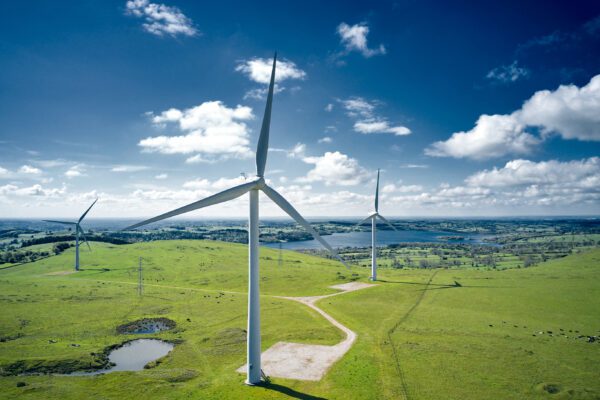
How can businesses get involved in Balancing Services?
Did you know that if you can be flexible in your usage, energy could become a whole new revenue stream for your business?
With wholesale prices hitting record highs this year, energy may be seen as an unavoidable cost within your organisation – but did you know that if you can be flexible in your usage, energy could become a whole new revenue stream for your business?
As we transition to a net-zero future, it’s becoming increasingly challenging for National Grid to maintain the balance between electricity supply and demand, as the growing proportion of renewable generation on the system can be intermittent. This means that they are becoming more reliant on businesses to help them to balance the grid – and get paid for doing so – through their Balancing Services.
National Grid now offers a range of different Balancing Services which require participating businesses to increase, decrease or shift their electricity use in response to a signal. In return, these businesses can receive strong financial incentives, reduce their electricity bills, cut their carbon emissions and play a key role in the transition to a net-zero electricity system by 2025.
If your business is interested in seizing these benefits, you will need to explore the range of different schemes available to determine which one is best for your business. Understanding all of Balancing Services National Grid offers – which your Demand Side Response (DSR) can participate in – can be complex, so here’s some guidance from our DSR experts.
Frequency services
Our power network runs on an alternating current (A.C.) system. The current on the network is supposed to alternate at a frequency of 50Hz, and to maintain the health of the network National Grid is mandated to keep this system frequency within plus or minus 1% of the 50Hz target at all times. In order to ensure that they can do this, they have a number of frequency response services in place, which require participating businesses to quickly increase, decrease or shift their demand to help stabilise the grid.
Dynamic frequency response services assist with the management of system frequency under normal operation, while static frequency services help to balance the system in the event of a fault. Schemes currently available to businesses include:
-
Dynamic Containment
Dynamic Containment is a new service that has been designed to provide faster-acting frequency response in the event of a fault. All technology types can get involved in this scheme, and National Grid runs tenders every single day, procuring over each 24-hour day, via 6 separate blocks of 4-hours (EFA blocks). Customers can specify which EFA Block they want to participate in at the day-ahead stage.
The incredibly responsive nature of this scheme means that in order to participate, you will need to ensure that your assets can respond to a signal from National Grid within 1 second. However, if you can participate in Dynamic Containment, you could stand to generate significant revenue – Dynamic Containment prices have been clearing at higher prices than other frequency services because the Grid values the speed of delivery.
- Firm Frequency Response (FFR)
The FFR scheme is another balancing service that can provide your business with substantial revenue (although prices will change month-on-month). National Grid purchases FFR through a monthly electronic tender process, and those that are chosen to participate are paid an availability price simply for making their energy available – which means your business will receive payment even if you’re not asked to adjust your consumption.
Under this scheme, businesses are typically called upon to turn on their generation assets rather than turning down demand, but those without generation capabilities can participate through demand reduction. You will need to be able to respond quickly, however, either turning up generation or switching off your demand within 30 seconds of receiving a signal.
Reserve services
In order to deal with unforeseen changes in demand or lack of generation, National Grid requires access to additional sources of power in the form of generation or demand reduction. The response times and durations are typically longer for reserve services than frequency services.
When there are unforeseen fluctuations in demand or generation, National Grid calls on businesses and other large energy users to provide a ‘reserve’ of additional flexibility in the form of generation and demand. As we move towards a low carbon future, National Grid is evolving its reserve services – here are the services that are currently available to businesses.
- Short Term Operating Reserve (STOR)
STOR is one of the most accessible Balancing Services, and as a result it’s usually the first service that many businesses participate in. If there’s a sudden loss of power or increase in demand on the system, participating businesses simply need to be able to provide at least 3MW of generation or steady demand reduction within 20 minutes of being instructed to do so. STOR is procured through a daily auction, for delivery the following day.
If your business wishes to participate in STOR, you will need to be able to provide capacity for at least two hours from a signal, and at least three times a week. These periods are called ‘committed windows’, and they vary from season to season. You can also provide optional STOR outside these windows, although it’s not guaranteed that the Grid will need it. You won’t be paid simply for being available – you will only receive payment when your capacity is utilised by National Grid.
- Fast Reserve
National Grid’s Fast Reserve service is used to balance out frequency fluctuations that arise from sudden, typically unpredictable, changes in demand or generation levels. Businesses that participate in this scheme must therefore be able to dispatch a large volume (a minimum of 25MW) to the grid within two minutes, and for at least 15 minutes.
The financial incentives for doing so can be substantial, and whilst all technologies are able to participate, some technologies – such as behind-the-meter generation – are better suited to delivering Fast Reserve than others. On average, National Grid calls for Fast Reserve services to be provided ten times a day, for approximately five minutes at a time. If your business is interested in participating in Fast Reserve, you will therefore need to ensure that you can provide large volumes of capacity at frequent intervals throughout the day.
- Demand Turn Up
Under the Demand Turn Up (DTU) service, National Grid asks businesses and generators to either increase their demand or reduce their generation during times of high renewable output and low national demand. As a result, businesses are typically called on to adjust their consumption overnight and during weekend afternoons in the summer.
If your business is selected to participate in DTU, you will need to be able to provide 1 MW or more of capacity – however, this can be aggregated from sites of 0.1MW and larger. You will need to provide availability reports to indicate how much volume you have available for DTU, which can be done on a weekly basis or further in advance, if you know what your availability will be for a prolonged period. If required, you will receive instructions to adjust your consumption via email and text message, and you will need to confirm that you have received them within 30 minutes of receiving the instructions.
The Capacity Market
Another opportunity available to businesses that have the ability to be flexible in their energy usage is the Capacity Market, a mechanism that has been established to ensure there’s a sufficient supply of electricity to meet projected future demand. Businesses can bid in Capacity Market auctions, and those that secure CM contracts will need to guarantee that they can provide additional capacity when it’s needed in return for a guaranteed strike price.
If your business can commit to providing capacity either one year or four years ahead of delivery, then you can get involved by bidding in the T-1 and T-4 year ahead auctions. The main four year ahead auction runs annually, and secures capacity four years in advance, while the year ahead auction provides a top-up of capacity for the same delivery year. You can provide capacity either through demand reduction or generation, but you must be able to provide the capacity you committed to at any time of stress during the delivery year or you will face financial penalties.
Get involved
We know that Balancing Services can seem daunting – with so many different requirements to consider, it can be difficult to know which route to providing demand response is the best option for your business.
But there are significant financial benefits to be gained by getting involved in Balancing Services – so make sure your business doesn’t miss out by talking to our DSR experts today. They can help you to find the best scheme for your business and apply to participate. Call us on 01772 689 250 or email [email protected] to speak to our friendly team today.










